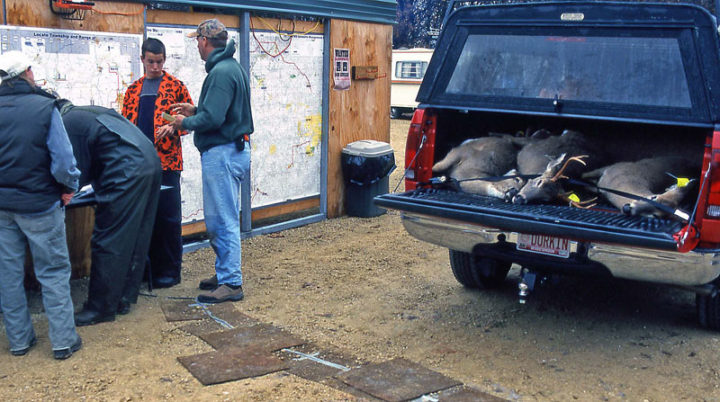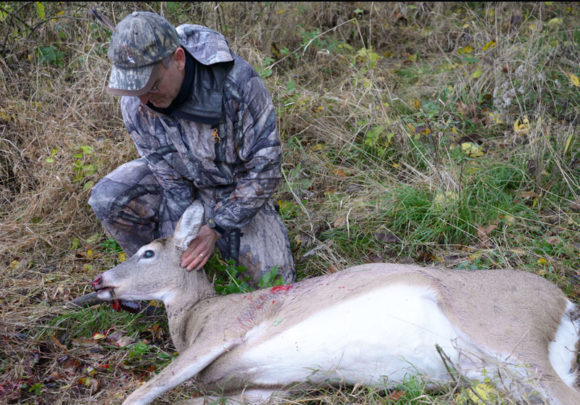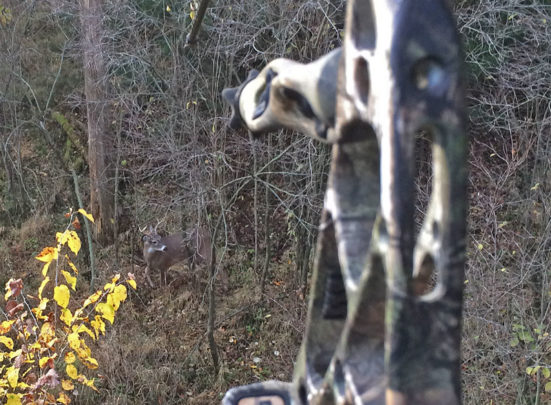Thirty-some years ago critics routinely accused the Wisconsin Department of Natural Resources of fear-mongering when it released its annual fish-consumption advisories.
The good folks claimed the DNR would ruin recreational fishing by scaring people with information about fish contaminated by PCBs, mercury and other nasty stuff we dumped and pumped into our lakes and rivers.

The Wisconsin DNR is falling short of its target of testing 4,000 deer for chronic wasting disease this year. With hunting seasons over, the DNR remains short by about 1,007 CWD samples.
In turn, DNR brass reminded us of its public-trust obligations to test fish systematically, provide people scientific information about contamination levels, and suggest how much fish we can safely eat, based on a fish’s species and size, and our sex and age.
After providing such information, the DNR said folks must decide themselves whether to follow the advice or ignore it. What the public doesn’t want is government agencies making such decisions for us, or hiding information about our fish.
My, how things have changed. Today, Wisconsin’s DNR and Department of Agriculture seem more concerned about making deer farming affordable than they are about keeping a scientific handle on chronic wasting disease.

Since discovering CWD in southern counties in 2002, the Wisconsin DNR has found the always-fatal disease in 3,100 wild deer.
In early December, the DNR Board passed an emergency rule to let deer farmers opt out of the state’s CWD-monitoring program and not upgrade fences to comply with new federal standards. About the same time, yet another deer farm – this time in the Northwoods’ Oneida County – recently yielded a CWD-contaminated whitetail, the 13th such facility to find the disease.
Even so, one could argue Wisconsin’s CWD problems are far worse in the wild than behind private fences. Since discovering CWD in Wisconsin in 2002, the DNR has detected the always-fatal disease in 3,100 wild deer, primarily in southern counties.
This fall, CWD surfaced for the first time in a wild deer in Crawford County, and Adams County identified its fifth case. That’s despite the fact the DNR again reduced CWD-monitoring efforts this fall.
Meanwhile, rather than address the state’s worsening problem, DNR Secretary Cathy Stepp and Gov. Scott Walker put on their happy faces before November’s deer season and bubbly taped an 80-second video encouraging hunters to register deer they kill with the DNR’s new electronic-registration system.
Yawn. As if hunters had another option.
If Stepp and Walker had to record a public-service ad, they should have sternly encouraged hunters in southern Wisconsin to get their deer tested for CWD before eating it, and directed them to the scant few places collecting samples. Instead, the two leaders are overseeing efforts to collect and share increasingly less information about CWD and its spread.
In late summer the DNR acknowledged it was cutting CWD sampling this fall, and set a goal of collecting 4,000 samples before the current period ended March 31, 2016. That’s 25 percent below its previous low, 5,313, in 2011.

Wisconsin is scaling back its CWD-monitoring efforts, even though the disease is spreading farther geographically and increasing in prevalence in existing CWD areas.
As of Jan. 10, the DNR had collected only 2,993 samples, or less than 75 percent of the goal. Can the agency obtain another 1,007 samples before March 31? Tami Ryan, the agency’s wildlife health section chief, said the DNR continues to work toward that goal, but she didn’t sound optimistic about reaching it.
After all, sampling peaks each year during Wisconsin’s nine-day November gun season, which ended Nov. 29. Further, the four-day antlerless-only gun season ended Dec. 13 and, earlier this year, the DNR Board eliminated late December’s holiday gun-deer season. All that’s left was the late archery season, which produces few kills, and ended Jan. 3.
But let’s face it: The DNR has basically told hunters not to worry about CWD tests, and makes sampling so inconvenient that this year’s dismal results aren’t surprising.
Therefore, it seems certain the DNR will not obtain a scientific assessment of CWD’s current presence and prevalence. Although the DNR has collected 75 percent of the CWD samples it desired, that’s a statewide objective. Ryan said some individual sampling areas have obtained only 19 percent to 54 percent of their goals.
“We’re still providing testing services and doing our best to monitor the disease, but until our statisticians analyze all the data from the information we obtain, we won’t know the confidence intervals for each area,” Ryan said. “We’re doing the best we can with what we have for funding and the changes we were directed to implement.”
Given that, one wonders why agency press releases routinely state, “CWD monitoring remains a priority for DNR.” And why keep touting the convenience of self-serve CWD kiosks, even though few such stations operate statewide, and the usage “volume wasn’t high,” Ryan reported.

The Wisconsin DNR had collected only 2,993 samples, or less than 75 percent of its 2015 goal as of Jan. 10.
Further, even though the DNR hasn’t yet tabulated the reports, Ryan said the agency is experiencing an “increasing trend in the number of sick-deer reports” phoned in by residents west of Madison. “DNR staff in the southwestern part of the state regularly divert from their normal workload to handle these calls,” Ryan said.
But it isn’t just the DNR ignoring CWD’s worsening spread. Flat-earthers in the hunting community keep claiming CWD has been around “forever” in Wyoming, and “everything out there is just fine.” Odd. Why, then, is Wyoming’s CWD-endemic area 3.2 million acres larger this year? And why does it cover more than half of the Cowboy State?
And why did Wyoming researchers report in December that its Southern Converse County mule-deer herd number 14,000 in the early 2000s, but fell to half that the past decade? Wildlife researchers studying that herd believe CWD is causing a 19 percent annual decline.
At least Wyoming is still studying and reporting on CWD. What’s Wisconsin’s excuse?
It’s disappointing when smart citizens deny science because they desperately want to believe CWD won’t harm their chief outdoor recreation.
But it’s irresponsible – possibly dangerous – when we let politicians take over a state agency and prevent science from studying a looming wildlife-health crisis.

 By
By 



